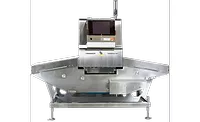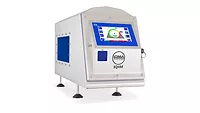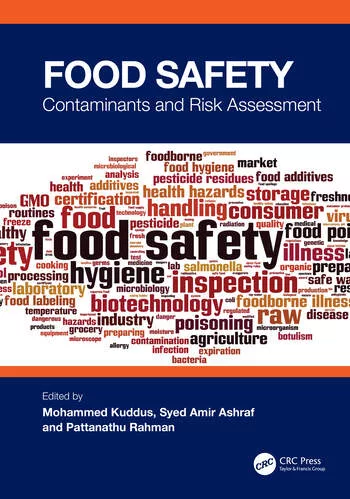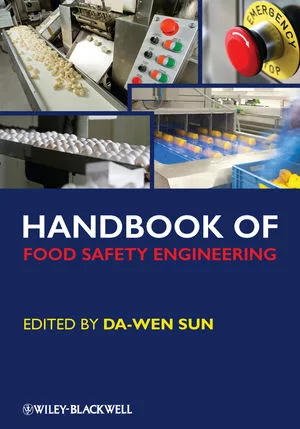Improve inspection and detection of dairy product contaminants
Advances in inspection and detection technologies are enabling dairy processors to pinpoint even the smallest of metal and other contaminants




Metal detectors, X-ray systems and other inspection/detection systems play a critical role in helping dairy processors prevent recalls that are tied to foreign materials such as metal and other issues that are not related to pathogens or allergens.
The greatest challenge dairy processors face in terms of potential foreign material contamination is stainless steel, noted Rich Cisek, CEO of Peco Controls/InspX Corp., San Carlos, California. That’s because the metal is so widely used in dairy processing operations.
Multiple metal detectors on various lines, therefore, can be instrumental in allowing dairy processors to check for metal contaminants throughout processing, said Kathryn Bors, North American brand manager for Loma Systems, Carol Stream, Ill. Such a setup also makes it easier for dairy processors to pinpoint the source of the contamination.
“Newer metal detector technology offers greater detection capabilities and easier operation from color touchscreen controls,” she said.
Steve Mason, national sales manager for Toronto-based Fortress Technology Inc., also sang the praises of newer metal detection technology.
“Today, metal detection can rival X-ray inspection in some of the toughest contamination challenges while maintaining a far more affordable capital cost and cost of ownership,” he said. “Fortress has witnessed a step-change not only in terms of neutralizing the most obstructive types of product effect, but also in key areas such as vastly increased sensitivity and single-pass product learning, allowing much higher levels of overall equipment effectiveness, compliance and product safety.”
When it comes to pumped products such as milk and yogurt, shards from stainless-steel equipment upstream are a potential issue. Here, piped metal detectors and X-ray inspection systems can identify and reject such contaminants before further processing, noted Robert Rogers, senior advisor of food safety for Mettler Toledo Production Inspection, Lutz, Fla.
Looking for quick answers on food safety topics?
Try Ask FSM, our new smart AI search tool.
Ask FSM →
But small stainless-steel and other metal contaminants still can present a challenge for metal detectors, Cisek maintained.
“When it is present in very small pieces in a dairy product, it can be very hard to detect with an ordinary metal detector,” he said. “For example, finding pieces of cheese wire in a large block of cheese with a metal detector is impossible; however, those same wire fragments are very detectable with an X-ray system.”
Challenges specific to dairy
Dairy processors face some product-related challenges in their metal-related detection and inspection efforts, too. Product conductivity is an issue, for example.
“Detection is especially challenging in dairy applications because most of the products have a high product effect in an electromagnetic field due to their conductivity,” said Bob Ries, lead product manager, metal detection and X-ray inspection for Thermo Fisher Scientific, Waltham, Mass. “With cheese, ice cream or any wet, warm or salty product, it can be difficult to ignore the product while detecting the metal contaminant.”
Thermo Fisher Scientific developed multiscan technology to address this issue, he explained. The multiscan metal detectors are able to run up to five frequencies at a time.
“The result is higher sensitivity and product safety,” Ries said, “capable of separating the product signal from the metal signal, identifying them differently depending on the type, size and shape of the contaminant.”
A platform from Erie, Pa.-based Eriez Manufacturing Co. can help here, too.
“Tramp metal produces various signals when passing through metal detectors,” John Klinge, market manager, light industry for Eriez, explained. “Some products generate signals that confuse typical metal detectors into thinking there is metal when there is none. The Eriez Xtreme metal detector enhanced platform ignores those signals, or false trips, and is thus able to detect the smallest of metals in challenging products such as 40-pound blocks of cheese.”
He added that the best way to overcome many metal contamination challenges within the dairy space is to employ multiple metal detectors with magnetic separators at strategic locations in the processing line.
“Working in conjunction, the magnet removes the ferrous contamination, while the metal detector focuses on any ferrous missed by the magnet, as well as nonferrous metals such as aluminum, copper, brass and stainless steel,” Klinge said.
The use of foil-top lids with products such as yogurt also can be problematic. Dairy processors really need an X-ray system to detect foreign contaminants through the foil, Bors said.
“For small products such as yogurt, a compact X-ray system is ideal as well,” she explained.
Ries agreed that foil-top and other metalized film packaging applications need the sensitivity of X-ray. But even though X-ray performance is unaffected by factors such as product temperature and conductivity, dense products can present a challenge, he stressed.
“As metal detection and X-ray systems become more capable, they can also become more complex to use and maintain,” Ries added. “Suppliers such as Thermo Fisher are always striving for easy-to-use interfaces and built-in troubleshooting tools, but all too often, a relatively high knowledge of basic detection principles is needed to use an inspection system. … It is always recommended to invest in training and, where possible, assign a skilled, experienced technician as the ‘owner’ of each machine so he or she can set up and adjust the systems as quickly as possible.”
On the metal detector side, accurate documentation of system usage also presents a potential challenge. Such documentation is in line with the increased scrutiny tied to current and future food safety requirements, said David Smith, sales manager for Advanced Detection Systems, Milwaukee.
“Dairy processors need to document correct metal detector settings, detection events, absence of false trips and the identity of employees accessing metal detector settings,” he said. “[That] has led to the development of metal detector operating features that facilitate the documentation required. Recently developed features include administrative passcoded login levels to capture the user name, time and date of detector setting changes and thumb-drive access to a continuous data log of metal detector events, as well as recent detection events being visible on the touchscreen menu.”
Metal detector advances
Fortunately for dairy processors, suppliers of metal detectors continue to introduce advances that improve detection and ease of use.
New from Mettler Toledo is the Profile Advantage metal detector. Designed for pumped and conveyorized products, the “breakthrough technology” enables extremely high detection of metal contaminants in dairy products that exhibit the aforementioned high product effect, Rogers said.
“This new technology not only enables detection of very small metal pieces; it also reduces false rejects to virtually zero,” he noted, “resulting in increased efficiencies and reduction of waste.”
For its part, Eriez recently introduced two new metal detector and magnetic separator systems. Designed for ferrous and nonferrous metal contamination, the systems “work to produce as close to a perfectly pure product yield as possible,” Klinge said.
The system for liquid product lines combines an Extreme liquid line metal detector with automatic reject with a magnetic B-trap, he noted. The other system, for free-falling bulk materials, includes an easy-to-clean grate in housing and a Vertical Extreme metal detector with reject.
“Both systems use Eriez RE7HP tube magnets — the strongest available in the industry — to remove ferrous contamination from the product flow first, thus enhancing product quality and reducing rejected material from the downstream metal detector with automatic reject,” Klinge said. “Both systems ensure compliance with Hazard Analysis and Critical Control Point programs and regulations set forth by various federal agencies.”
The new Interceptor metal detector from Fortress Technologies, meanwhile, “overrides the propensity of ‘wet’ product effects to drown out the signal from stainless steel by singling out low-frequency signals to eliminate the product effect — while leaving the signal from stainless steel more readily identifiable in the higher-frequency range,” Mason said.
The system relies on software algorithms and can pinpoint metal fragments that are half the size of those detectable with previous-generation equipment, he added.
“The performance of the Interceptor has been a game-changer for the dairy industry, and one which can be applied to metal detection not just of finished packs, but also of free-flowing pumped dairy liquid or powdered product,” Mason noted. “Other valuable benefits include the ability to more accurately inspect product packaged in metalized film.”
Also potentially game-changing is the previously mentioned Thermo Scientific Sentinel multiscan metal detector. Metals not detected at one frequency can be detected on another, Ries explained.
“Unmatched sensitivity enables quality managers to identify metallic contaminants as much as 50% smaller in volume than they could with previous technologies,” he noted.
And when it comes to magnetic separation, Newton, Kan.-based Bunting Magnetics Co. is continually researching better grades of magnetic materials, said Barry Voorhees, product manager, metal detection.
“Our ‘circuit’ will determine the effectiveness of the magnet, which is typically in terms of pounds-force it takes to remove a ferrous contaminant from the surface of the magnet,” he said. “We introduced NUHI, which is the highest pull-value cartridge magnet that we have seen available on the market.”
And the CEIA THS/MS21 multi-spectrum metal detector from Heat and Control Inc. is now available with optional USDA-certified construction, said Todd Grube, product manager, inspection systems, Lititz, Pa., and Bill Nutting, product manager, sales – DACS, Hayward, Calif.
“The design eliminates any difficult-to-clean areas, which could harbor bacteria, the men noted. “Designed for the most difficult products with strong product effect, including cheese, only CEIA THS/MS21 multi-spectrum metal detectors use multiple detection frequencies simultaneously to deliver the greatest sensitivity to all magnetic and nonmagnetic metals and accurately compensate for product effect to reduce waste and false-reject signals without reducing sensitivity.”
X-ray system enhancements
On the X-ray front, Anritsu Infivis Inc., Elk Grove Village, Ill., recently debuted its second-generation dual-energy XR75 DualX X-ray inspection system. It is ideal for finding low-
density contaminants such as rocks and stones, bones and glass in a number of food products, said Eva Bar, marketing and communication manager.
“Based on Anritsu’s industry-leading XR75 X-ray platform, the new DualX provides significant improvements to detector and tank lifetimes to reduce overall cost of ownership,” she added.
And Peco Controls/InspX has two new offerings on the X-ray side: the Shield lineup of X-ray machines, which are approximately 20% more sensitive than the company’s previous-generation machines, and the Hi Resolution X-ray system, which will allow the inspection of products at more than 10 times the resolution of current machines, Cisek said.
“This enhanced capability will allow reliable detection of much smaller contaminants at extremely low false-reject rates,” he noted.
Also notable is the X5C compact X-ray system from Loma Systems. Designed for small packaged goods and products with metalized packaging, it detects all types of metal, plus bone, glass and dense plastics, Bors said.
“It can also check for product integrity — such as low fill levels of yogurt, for example, [and] improper seals, missing items and defective product,” she noted. “It has a very small footprint and a simple yet powerful inspection feature set.”
Beyond metal detectors and X-ray systems
On the inspection and detection front, vision inspection systems (image-based) and checkweighers also can be indispensable tools for dairy processors. For example, a vision inspection system can check a packaged product to ensure it has the proper label, Rogers said.
“Inspection systems with easy-to-use human-machine interfaces are beneficial so that any operator can easily set up the machine quickly and have the line running immediately,” he noted. “Password protection is helpful to ensure only authorized personnel can make changes to settings.”
And checkweighers help verify the weight of the final product to ensure it is not over or under what it should be. Checkweighing systems that can address more than one product are in high demand on the part of customers, according to James Lubow, product manager, checkweigher and TSDW for Yamato Corp., Mequon, Wis.
“Changeovers are occurring on a regular basis on packaging lines, and our checkweigher designs have to be able to accommodate this variety while maintaining high speeds and high-accuracy measurements,” he said. “Yamato offers a wide variety of checkweighers and space-saving combination checkweigher/metal detectors. With stainless steel and IP69K constitution, the checkweigher is capable of being in the processing room even though it oftentimes only handles product that is already packaged.”
Don’t go it alone
It can be difficult for a dairy processor to select the right inspection and detection equipment — as well as install and support it. Fortunately, equipment processors can help.
“We recognize that customers rely on equipment suppliers to give more technical support, as well as engineering assistance,” Voorhees said.
He noted that companies such as his can help evaluate the processing line(s) to assist customers in such things as identifying the right solution, performing — or training customers to perform — magnet audits, and conducting calibration tests on all brands of metal detection equipment to meet auditing process requirements.









